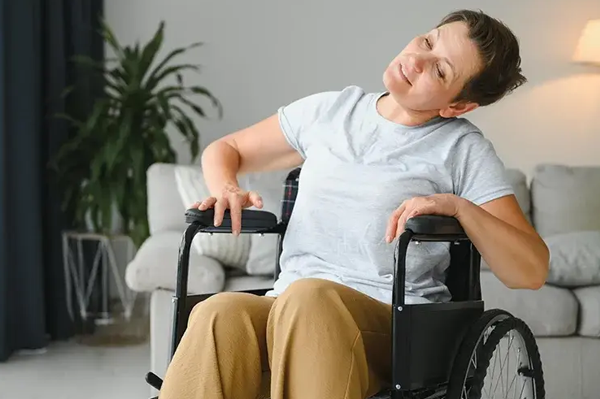Paralysis

Paralysis refers to the loss of muscle function in one or more parts of the body. It can occur suddenly or gradually and may be partial or complete, temporary or permanent, depending on the underlying cause.
Causes
Paralysis is typically caused by disruptions in the nervous system. Common causes include:
- Stroke: Interrupts blood flow to the brain, affecting muscle control.
- Spinal Cord Injury: Trauma or damage leading to loss of nerve function.
- Multiple Sclerosis: An autoimmune condition damaging the protective covering of nerves.
- Poliomyelitis (Polio): A viral infection affecting the nervous system.
- Bell’s Palsy: Temporary facial paralysis due to nerve inflammation.
- Guillain-Barré Syndrome: A rare disorder where the immune system attacks peripheral nerves.
- Trauma or Tumors: Damaging the brain or spinal cord.
- Infections: Such as meningitis or encephalitis.
Symptoms
Symptoms depend on the type and extent of paralysis. They may include:
- Inability to move the affected part of the body.
- Numbness or loss of sensation.
- Muscle weakness or atrophy.
- Difficulty speaking, swallowing, or breathing (in severe cases).
Treatment
Treatment focuses on addressing the cause, managing symptoms, and improving quality of life:
- Medical Intervention:
Medications (e.g., anticoagulants for stroke, steroids for inflammation).
Surgery (e.g., decompression for spinal cord injury).
- Physical Therapy: Exercises to improve mobility, strength, and flexibility.
- Occupational Therapy: Training to adapt to daily activities and enhance independence.
- Assistive Devices: Wheelchairs, braces, or prosthetics to aid mobility.
- Lifestyle Changes: Balanced diet, maintaining a healthy weight, and regular exercise.
- Psychological Support: Counseling to address emotional and mental well-being.
